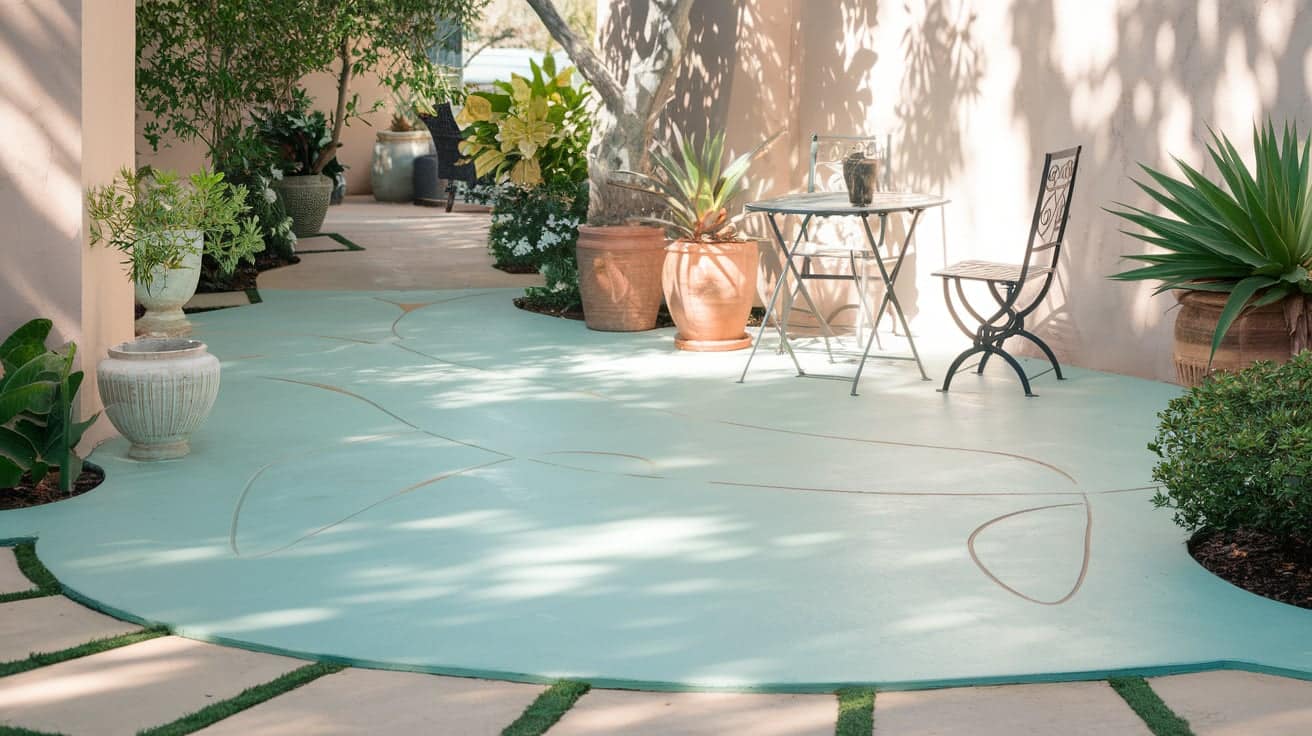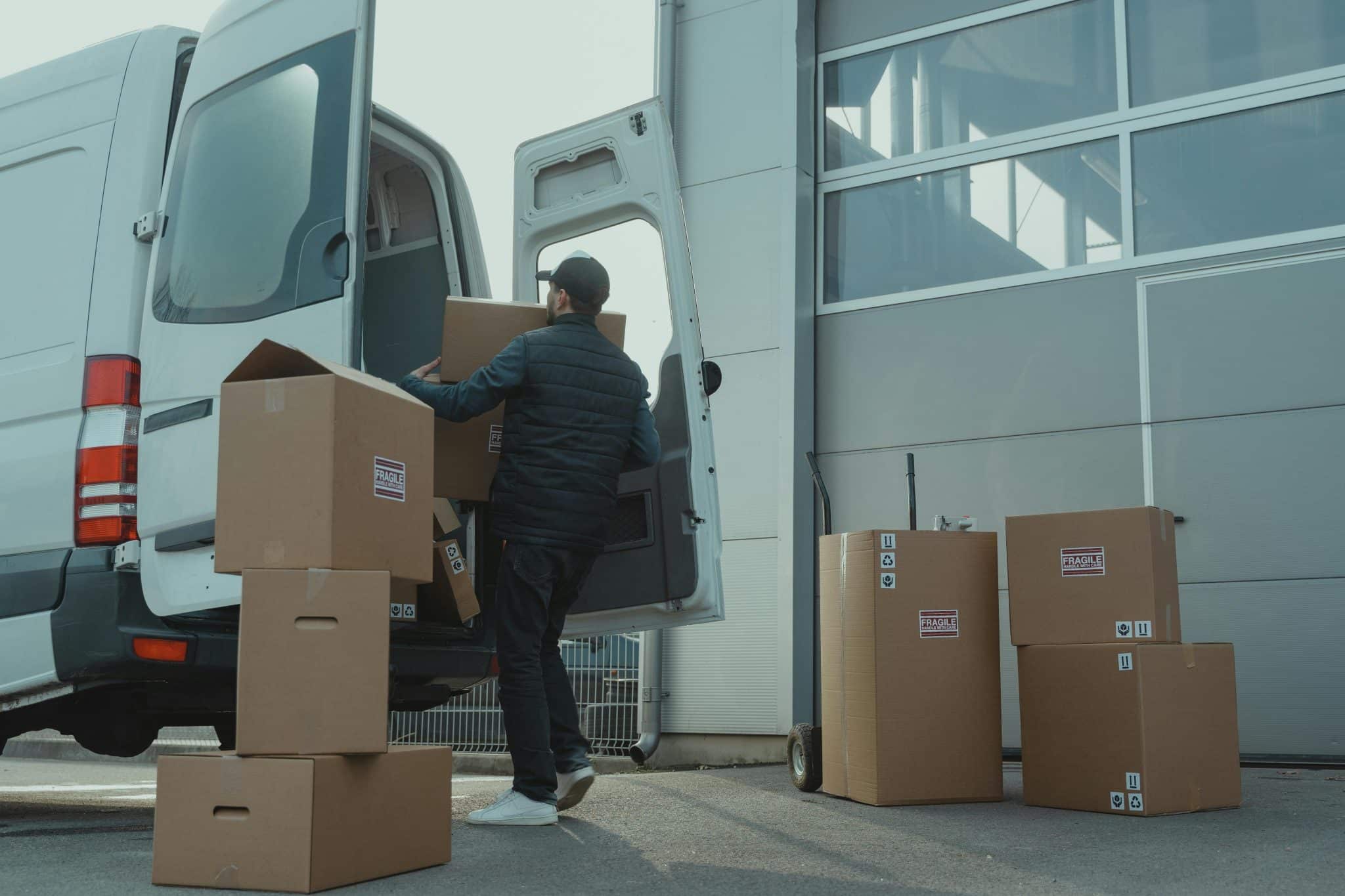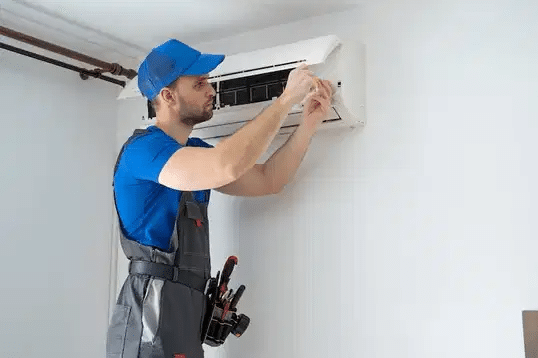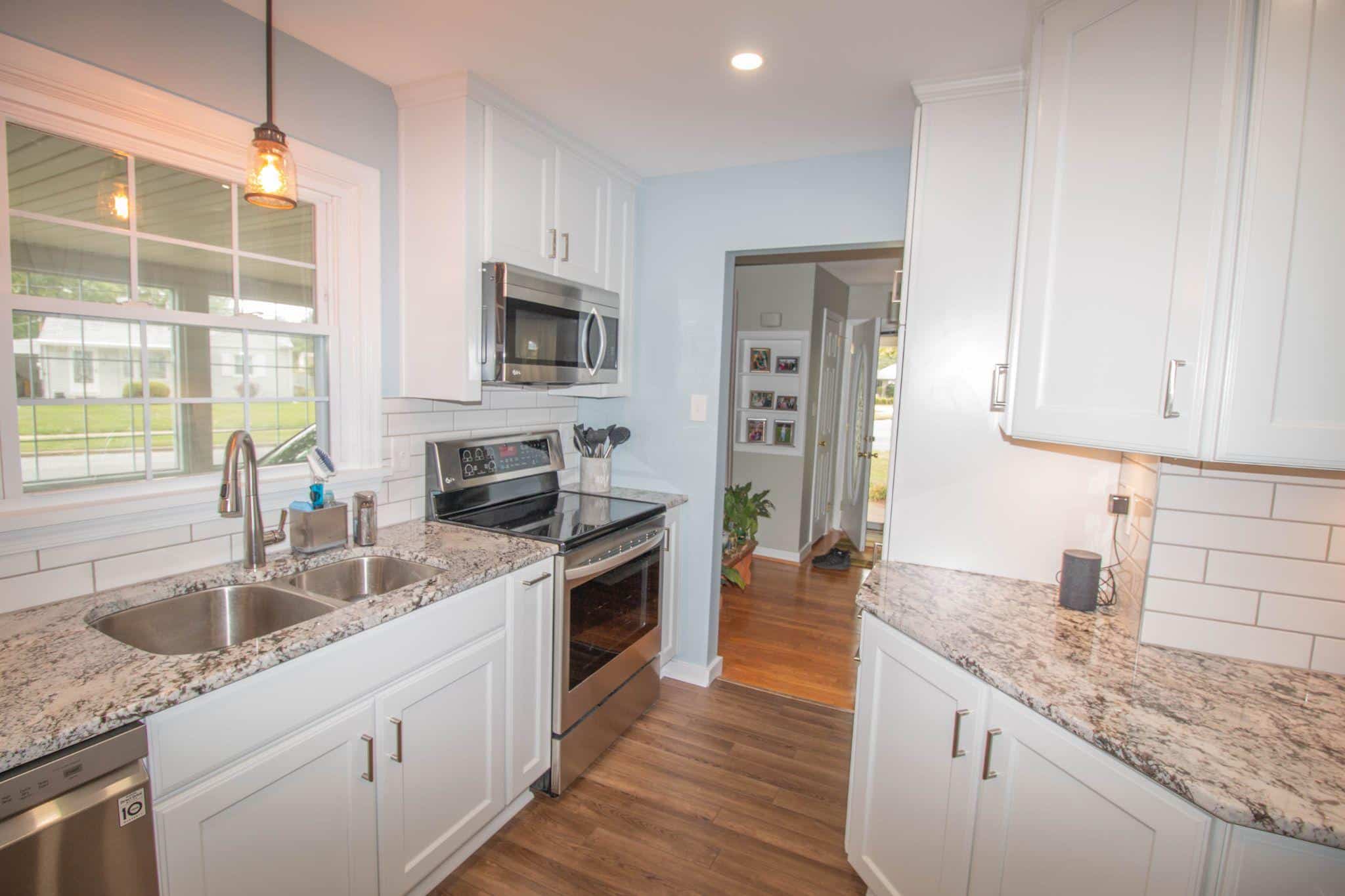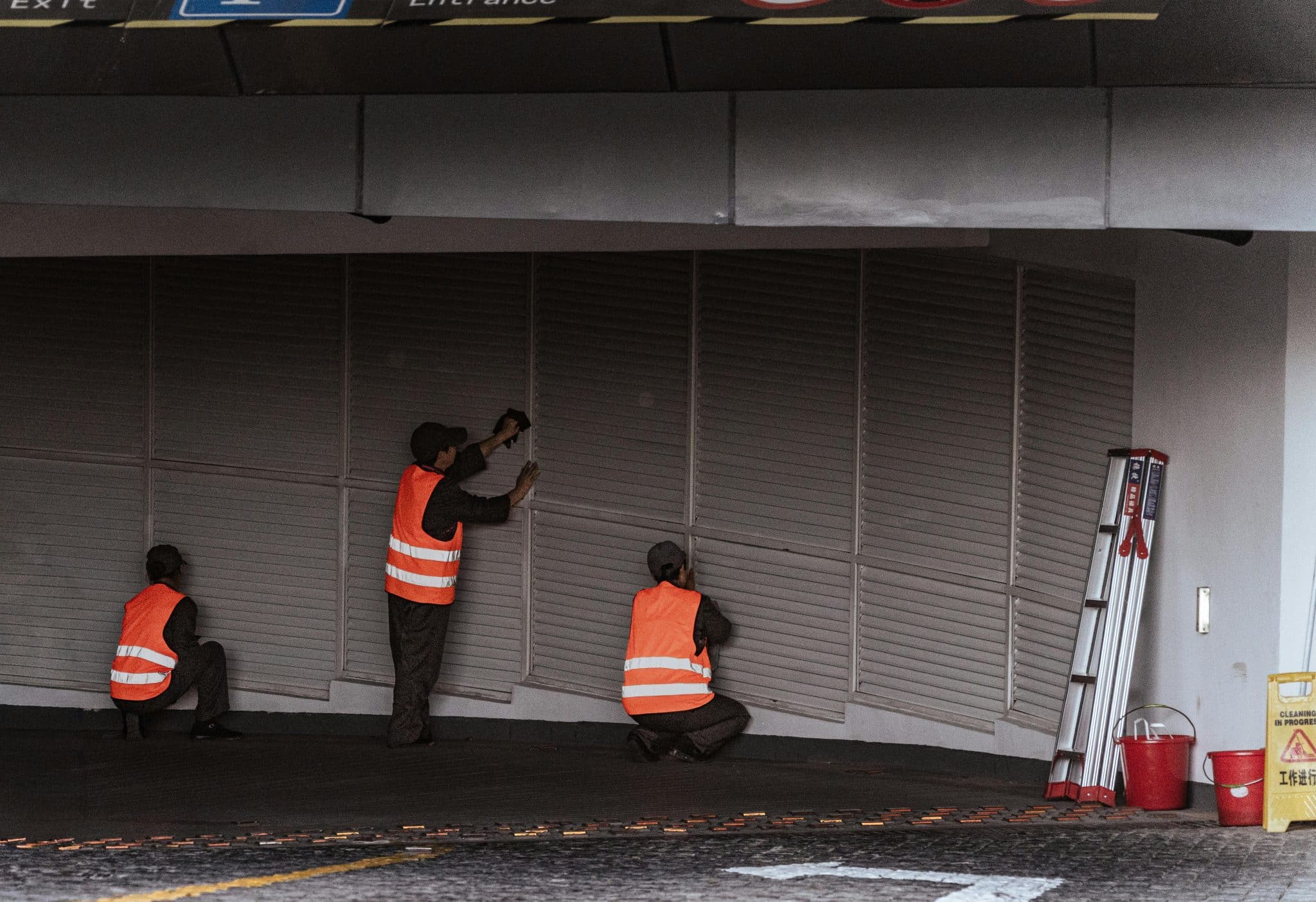Your old concrete patio can quickly turn dull and moldy, making your outdoor space look worn and unwelcoming. It might seem like you need to replace the entire patio, which means spending thousands of dollars and weeks of construction a mess.
The good news is that there’s a much simpler solution. Applying a high-quality concrete coating can transform your patio in just one day, giving it a fresh, clean look without breaking the bank.
In this guide, I’ll show you exactly how to paint your concrete patio using an acrylic waterproof coating. I’ll walk you through each step, from proper surface preparation to applying the final coat.
You’ll learn which tools work best, how to fix cracks and imperfections, and tips for getting a finish that lasts for years.
Tools and Materials Required
| Tools | Purpose |
|---|---|
| Buffer with grinding pads | Smooth the concrete surface and remove any imperfections. |
| Vacuum and leaf blower | Clean the concrete surface by removing dust, dirt, and debris before painting. |
| Putty knife | Fill in cracks or holes in the concrete with filler before painting. |
| Paint brushes and 18-inch roller | Brushes are used to cut edges and corners, while rollers are used to apply paint to larger areas. |
| Drill with mixing paddle | Mix paint, primers, or bonding agents thoroughly before application. |
| Materials | Purpose |
|---|---|
| Acrylic waterproof concrete coating | To provide a protective, waterproof finish for the concrete surface. |
| Two-part polyurea crack repair material | To fill and repair cracks in the concrete, ensuring a smooth surface for painting. |
| Thickening agent (for repairs) | Thicken the crack repair material, making it easier to apply and allowing for better bonding. |
Step-by-Step Procedure for Painting Concrete Patio
Step 1: Check Your Patio
You need to look closely at the concrete surface. Start by checking for small cracks, chips, or any other damage that might be present. It’s important to find the areas that need to be fixed.
Once you’ve identified these spots, measure the area to determine how much coating you will need for the repair. This will help ensure you have enough materials to complete the job.
Step 2: Grind the Surface
Put the diamond pads on your buffer machine. Move it across the whole patio to take off a thin top layer. This helps remove any soft, weak concrete.
After that, switch to the smoother ceramic pads to make the surface even. For a normal-sized patio (about 5 by 29 feet), this should only take about 15-20 minutes. Grinding makes the new coating stick better and last longer.
Step 3: Clean Up
After grinding, there will be a lot of dust. Use your vacuum to suck it all up. Then, go over the patio with a leaf blower to get rid of any dust the vacuum missed. Make sure the surface is totally clean and dry before moving on.
Step 4: Fix the Cracks
Mix equal parts of the repair material (4 ounces each of part A and part B). Add a bit of thickening agent so the mixture stays where you put it. Use a putty knife to spread the mixture into any cracks or holes.
This stuff hardens fast; it only needs about 20-30 minutes to set, even quicker on hot days.
Step 5: Smooth the Repairs
Once your patches have hardened, grind them down so they’re level with the rest of the patio. Use a hand grinder for any hard-to-reach spots.
When you’re done, clean everything again with the vacuum and leaf blower to remove all dust.
Step 6: Get the Paint Ready
Stir the coating thoroughly using your drill with the mixing paddle attached. This makes sure all the ingredients are well mixed. Keep your paint bucket in a shady spot so it doesn’t start drying out before you use it.
Step 7: Put On the First Coat
Start by brushing all the edges. Then, use your big 18-inch roller with a thick (3/4-inch) cover to paint the main areas. One gallon covers about 100-120 square feet.
Work on small sections at a time, and try not to let the edges dry before you roll the next section. Let this first coat dry for about an hour. It dries faster if it’s sunny.
Step 8: Add the Second Coat
After the first coat is fully dry (not sticky when you touch it), apply a second coat. Use the same method as before – edges first, then roller.
The second coat will go further, covering about 150-200 square feet per gallon. Let everything dry completely before walking or putting furniture on your patio.
For a visible go-through, check out the YouTube video by @MikeDayConcrete
5 Common Mistakes to Avoid
- Skipping proper surface preparation: Don’t skip grinding or cleaning—proper bonding requires a clean, slightly roughened surface.
- Using pressure washing instead of grinding: While pressure washing is an option, it requires 24 hours of drying time before coating, extending the project to multiple days.
- Mixing too much repair material at once: The polyurea sets very quickly, so only mix small amounts (8 oz total) that you can use within minutes.
- Working too slowly in direct sunlight: The coating dries faster in the sun. Keep your bucket in the shade and work at a steady pace to maintain a wet edge.
- Using an incorrect roller nap: A too-thin roller nap won’t hold enough material. For best results, use a 3/4-inch nap.
Cost Comparison: Resurfacing vs. Replacement
Here’s a table comparing the costs of resurfacing versus replacement for a concrete patio
| Option | Cost | Additional Considerations |
|---|---|---|
| DIY Resurfacing | $100-$300 for materials | Quick and easy process with minimal disruption. |
| Professional Resurfacing | $3-$7 per square foot | Professional help is faster than replacement. |
| Concrete Replacement | $6-$12 per square foot (not including removal costs) | It is more expensive and time-consuming; it disrupts your yard for at least a week. |
Conclusion
Transforming your old concrete patio doesn’t require expensive replacement. With just a day’s work and the right materials, you can create a fresh, durable surface that enhances your outdoor living space.
Remember to follow each step carefully. Proper surface preparation through grinding and thorough cleaning is crucial for long-lasting results. Repairing cracks before coating ensures a smooth, professional finish.
This DIY approach saves you thousands compared to full replacement, with materials costing between $100-$300 for most patios. The acrylic waterproof coating not only looks great but also protects your concrete for years to come.
Frequently Asked Questions
How Long Does Painted Concrete Last Outside?
A properly applied concrete coating can last 3-5 years on high-traffic areas. With good preparation and quality materials, it may last up to 7-10 years on less-used surfaces.
Do I Need to Seal Concrete After Painting?
No, you don’t need to seal the concrete after applying the acrylic waterproof coating. The coating itself acts as both a color and a sealer. It already contains water-resistant properties that protect your patio from moisture.
What Is the Best Color to Paint a Concrete Patio?
Light to medium gray, tan, or beige work best for concrete patios. These colors hide dirt and match most home exteriors. Darker colors absorb heat but show more dust.
What Happens If You Paint Concrete Without Primer?
Without primer, paint may not stick well to concrete. This leads to peeling, flaking, and bubbling, especially in high-traffic areas or places with moisture. The paint will wear off faster, and you’ll need to redo the job sooner.

